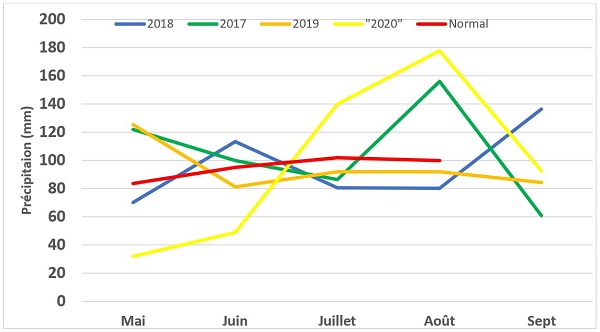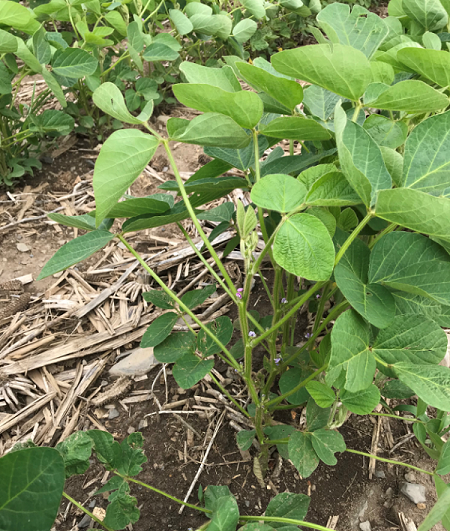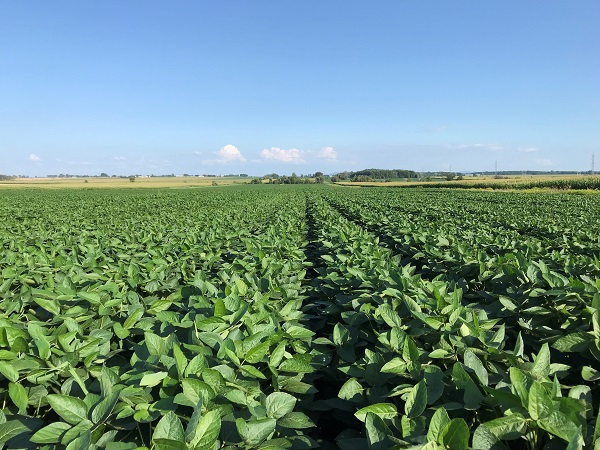Optimum Yield in Soybeans: Making the Right Choices
March 17, 2021The two management points most likely to increase your soybean yield when soil conditions are adequate, with optimum pH and compaction well managed, are:
1. Planting date
2. Variety choice
Sowing soybeans before May 15 will get the maximum yield from your soybeans. The yield decreases by 4% during the second half of May, while sowing in June generates only 84% of the maximum yield of the season, according to our cumulative data since 2010 at Sollio Agriculture’s research farm in crop production.
The choice of variety is essential for achieving high yields. However, the selection of the best performer from 2020 does not guarantee the achievement of this objective in 2021. In Quebec, new star varieties in 2020 benefited from perfect conditions to outclass varieties with a history of yield stability during the previous years.
Looking Back on the 2020 Season
By analyzing the precipitation data from our weather station at the St-Hyacinthe research farm, the 2020 season is average in terms of seasonal precipitation. However, looking more closely at the data on graph #1, the 2020 season in Montérégie (yellow line) is the one with the driest months of May and June in recent history and with the most precipitation during the month of August. This is a yield-enhancing cocktail in soybeans due to the resulting absence of white mold, which usually steals the yield potential of varieties susceptible to this disease.
Graph #1: Precipitation from 2017 to 2020, St-Hyacinthe weather station

The #1 enemy of soybeans in Quebec and Eastern Ontario is white mold (sclerotinia). This is the region in North America where the pressure of sclerotinia is greatest. This is explained by our climate conditions that favor the growth of the fungus. The sclerotinia fungus thrives in June when soil conditions are wet and the temperature is cool below 26°C. When its conditions are present during the two weeks before the soybean blooms, the fungus germinates, grows, and prepares to release the spores that will infect sensitive soybean plants that will flower a few days after the summer solstice. The infection period occurs during the first 15 to 20 days of July.

Photo of susceptible soybeans infected with white mold (sclerotionia)
Historically in Quebec and Eastern Ontario, under our normal seasonal conditions, soybeans with the best tolerance to sclerotinia obtain the best yields.
So, if your selection of soybean variety for 2021 reflects the “Top Gun” for the 2020 season, it will be wise to introduce the option of a fungicide into your management in order to keep the dream of a high yield with a soybean that lacks a proven history under the conditions we usually see in Quebec and Eastern Ontario.
Applying a fungicide at stage R2.5, just before a pod appears in one of the top four nodes of the plant, may help reduce the impact of sclerotinia. This option, at a cost of around $80 / ha, represents 4.5% of your potential yield gain. A new high-yield player must be at least 4.5% higher in yield before being profitable and justifying its position in your fields.

Example of R2.5, the recommended stage for the application of a fungicide
The price of soybeans has risen sharply at the start of 2021, so the selection of a soybean variety that has proven to be tolerant to sclerotinia is a wise choice in risk management in 2021.
Katonda R2 and Hydra R2 soybeans have been industry leaders for several years in Quebec and Eastern Ontario. The stability of their performance over the years makes them first-choice cultivars to ensure profitability in soybean cultivation in this region. Katonda R2 and Hydra R2 have an extremely well-balanced agronomic profile with the highest tolerance to white mold on the market today.

Katonda R2 soybean field
In conclusion, the expectation of high return begins with balanced risk management. Planting date combined with a soybean variety that has demonstrated performance in the past is a guarantee of success. Introducing new cultivars is a great way to push the yield limit to new heights if they are introduced to only about 20% of the seeded area.
Luckily, there is still time to update your risk management for this spring!
